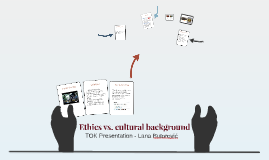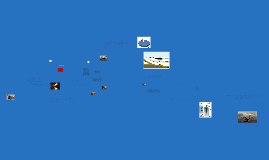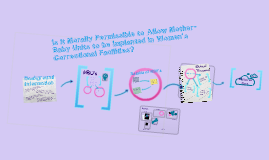Ethics presentation
Transcript: Ryan Sauerman on the BP oil spill BP's actions are facing unprecedented scrutiny, thanks to a years-long history of legal and ethical violations that critics, judges and members of Congress say shows that the London-based company has a penchant for putting profits ahead of just about everything else. Over the past two decades, BP subsidiaries have been convicted three times of environmental crimes in Alaska and Texas, including two felonies. It remains on probation for two of them. It also has received the biggest ever fine for willful work safety violations in U.S. history and is the subject of a wide range of safety investigations, including one in Washington State that resulted last week in a relatively minor $69,000 fine for 13 "serious" safety violations at its Cherry Point refinery near Ferndale, Wash. What Caused this Massive Spill ? They know now it was a methane bubble that escaped from the well and shot up the drill column, expanding very promptly as it blasted through several of the main seals, that's when the explosion happened according to the Rig workers that were there. Way beneath the sea floor methane is in crystalline form, and at any given time they could hit that nasty gas, that's just the chance they take with the Eco system. As the methane bubble came up through the drill column from the high pressure environs of the deep to the pressurized shallows, the bubble increased breaking through the safety barriers they said. The Deepwater Horizon Oil Spill (aka BP Oil Spill) is one of the worst oil disasters in history. How much damage has BP done? How will they make up for it? This is what I discovered: BP made a deal with the government that they would set aside $20 billion toward oil cleanup and spill victims. 16,000 total miles of coastline have been affected, including the coasts of Texas, Louisiana, Mississippi, Alabama, Florida. Even though the gushing well was capped in July 2010, oil is still washing up on shores, which might do long-term damages to humans affected. The initial oil rig explosion killed 11 people and injured 17 others. President Obama announced that his administration would create a $20 billion spill response fund. Responders used 5.5 million feet of boom, a barrier placed in water, to collect and absorb oil. Of the 400 miles of Louisiana coast, approximately 125 miles have been polluted by the oil spill. One method of treating the oil spill is "in-situ burning" or burning oil in a contained area on the surface of the water. Oil spills are bad, but burning is also bad for the environment. Over 1,000 animals (birds, turtles, mammals) have been reported dead, including many already on the endangered species list. Of the animals affected by the spill that are still alive only about 6% have been reported cleaned, but many biologists and other scientists predict they will die too. The BP Oil Spill is the biggest in American history, with between 17 and 39 million gallons spilled in the Gulf of Mexico. Over 30,000 people responded to the spill in the Gulf Coast working to collect oil, clean up beaches, taking care of animals and performing various other duties. Perception Good and evil does not exist truly exist but rather is a made up concept derived from different perceptions of the same idea. For an example: Whenever there is a war we tend to see it as two sides, us (the good) against them (the evil). Does the evil portray themselves as evil? No, they see themselves as the good fighting evil. In order to fight for your beliefs you have to believe the opposing side is wrong and therefore identify their actions as evil trying to undo your righteousness. Good and evil is a universal concept that we can all agree on but must have our own idea of it in order to preserve ourselves and our own individual beliefs. “Good must be defined in terms of our goals rather than in terms of any categorical principles of morals imposed from the outside” (SM, 373) “A sampling of tar balls discovered on beaches at Fort Zachary Taylor State Park, Fla., Smathers Beach in Key West, Big Pine Key, Fla., and Loggerhead Key in the Dry Tortugas National Park, Fla. were flown by a Coast Guard HU-25 Falcon jet based in Miami, Fla., to New London, Conn. Tuesday for testing and analysis. “The results of those tests conclusively show that the tar balls collected from Florida Keys beaches do not match the type of oil from the Deepwater Horizon oil spill in the Gulf of Mexico. The source of the tar balls remains unknown at this time.” After its own internal probe, BP admitted that it made mistakes which led to the Gulf of Mexico oil spill. In June 2010 BP set up a $20 billion fund to compensate victims of the oil spill. To July 2011, the fund has paid $4.7 billion to 198,475 claimants. In all, the fund has nearly 1 million claims and continues to receive thousands of claims each week. Investigations continue, with U.S. Attorney General Eric Holder stating on April 24 2012, "The Deepwater Horizon Task Force

















